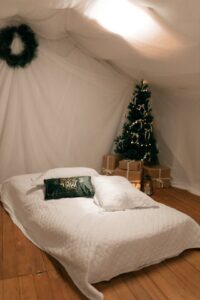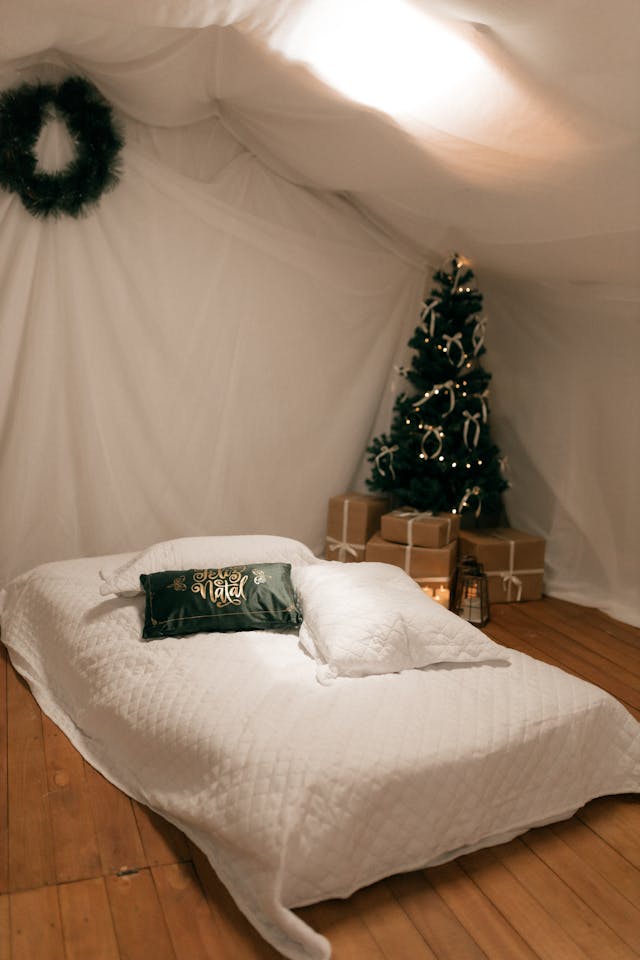Baby Sleep Routine Tips
Baby sleep routine tips using white noise can transform bedtime. Learn how to create a soothing, consistent routine that helps your baby fall—and stay—asleep naturally.
Key Takeaways
- White noise helps your baby fall asleep and stay asleep
- Safe sound levels (under 60 dB) protect hearing
- Routine and environment matter just as much as the sound
- Personalizing your baby’s sound preferences leads to better sleep
- Use white noise alongside other calming techniques
1. Keep the Volume Gentle and Comforting
One of the most effective baby sleep routine tips is using white noise at the right volume. A steady hum around 50-60 decibels (about the volume of a quiet conversation) can mask household noise and provide a womb-like atmosphere that helps babies relax.
Start low and adjust slowly, always prioritizing comfort and safety. Keep the machine at least 7 feet away from the crib to avoid direct exposure. Use a decibel meter app to confirm the sound stays in the safe zone. For more, read Happiest Baby’s guide.
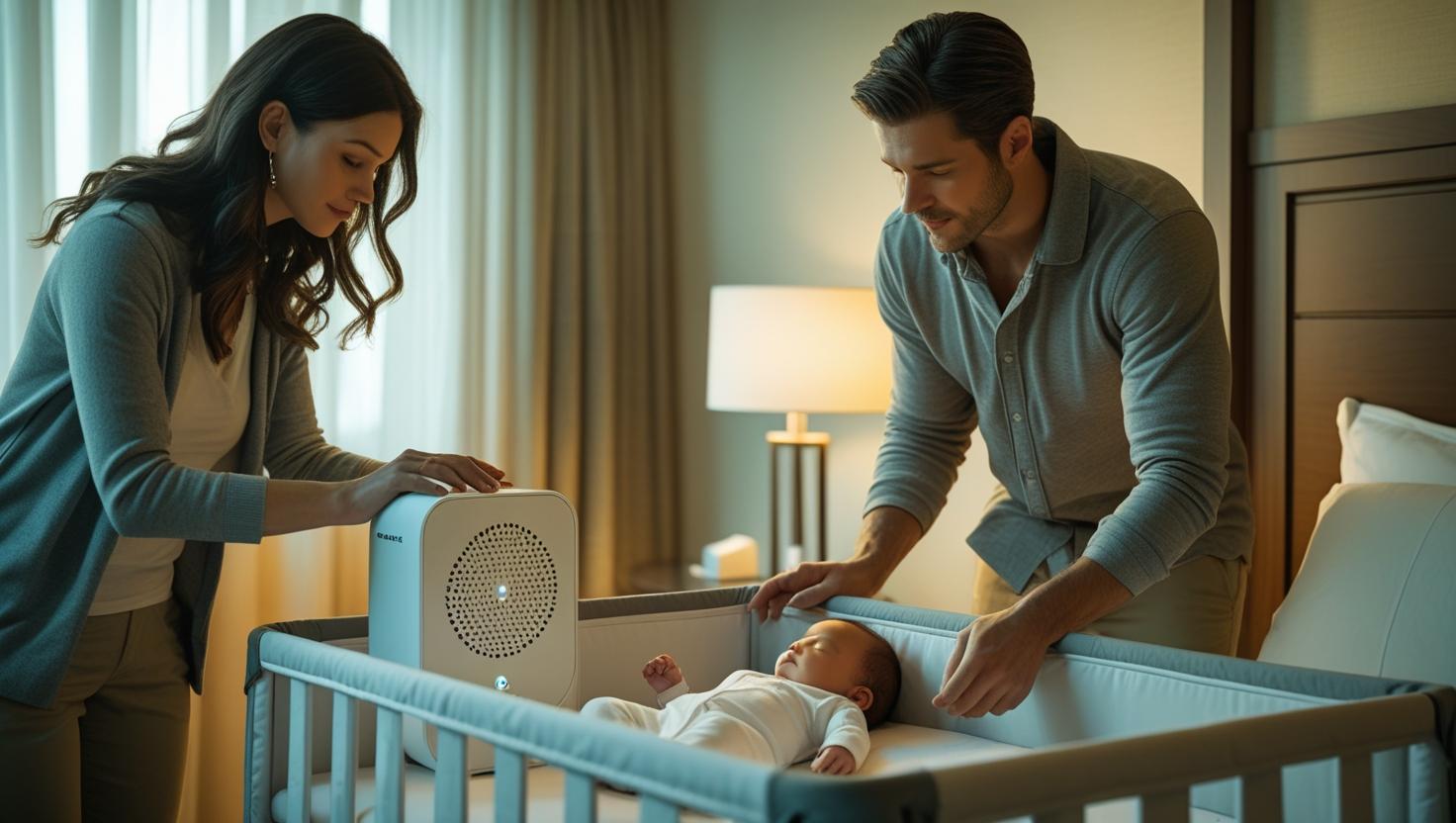
2. Experiment with Different White Noise Sounds
Just like adults, babies have sound preferences. One of the most personalized baby sleep routine tips is to try out different white noise options: ocean waves, soft rain, fan hum, pink noise, and more. What works for one baby may not work for another.
Observe your baby’s cues—relaxed arms, slower breathing, or less fussing are good signs. Experiment during naps to avoid nighttime disruptions. Many parents discover that a lower-frequency pink noise is more soothing than standard white noise.
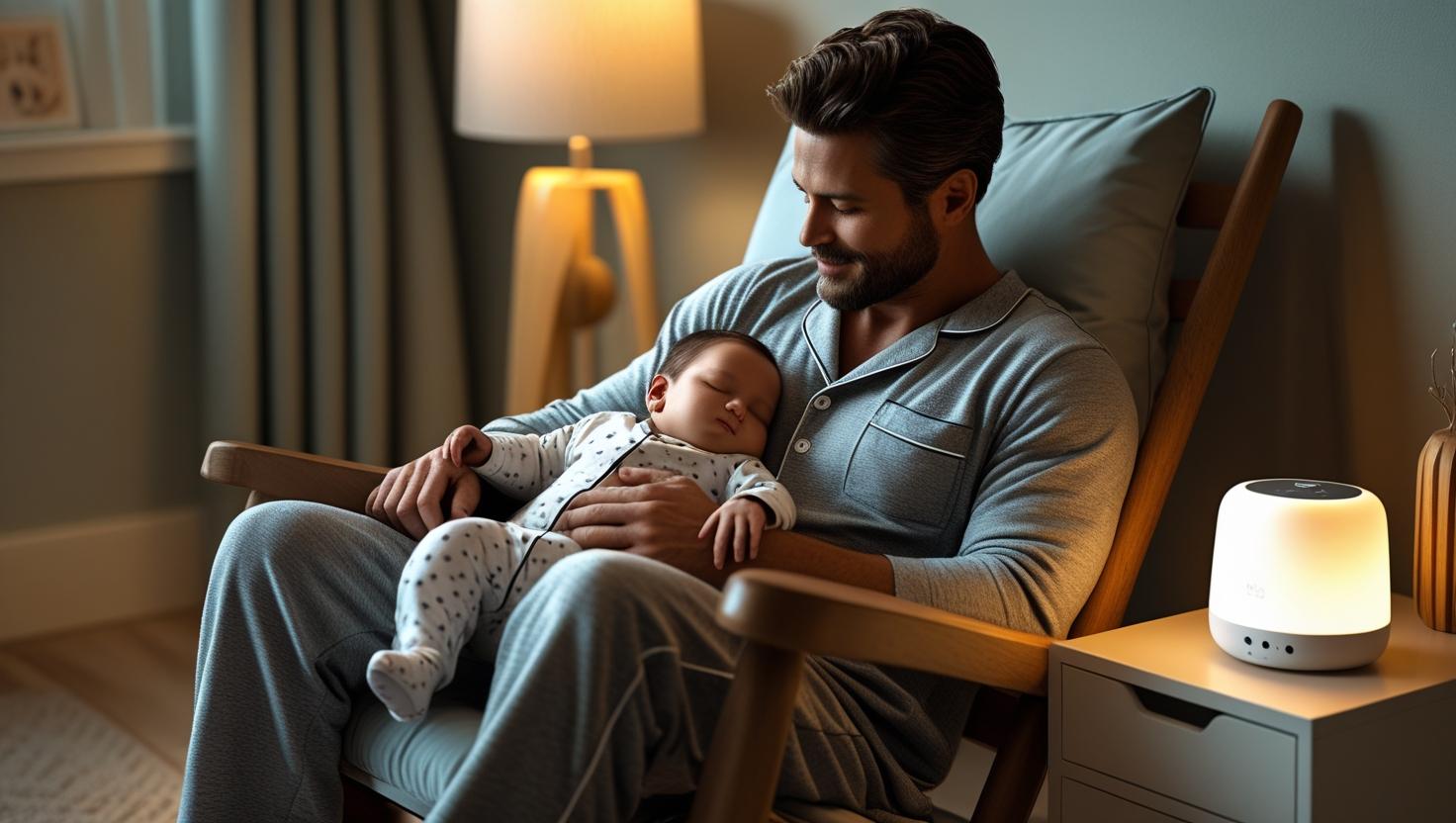
3. Make It a Regular Part of the Routine
Consistency is one of the top baby sleep routine tips. Use white noise at the same time every day—naps and bedtime—to help signal to your baby that it’s time for rest. Predictability is comforting and can significantly reduce resistance to sleep.
Create a multi-sensory routine that pairs white noise with a warm bath, lullaby, or gentle massage. Over time, these cues will work together to build sleep associations that support deeper, more restful nights.
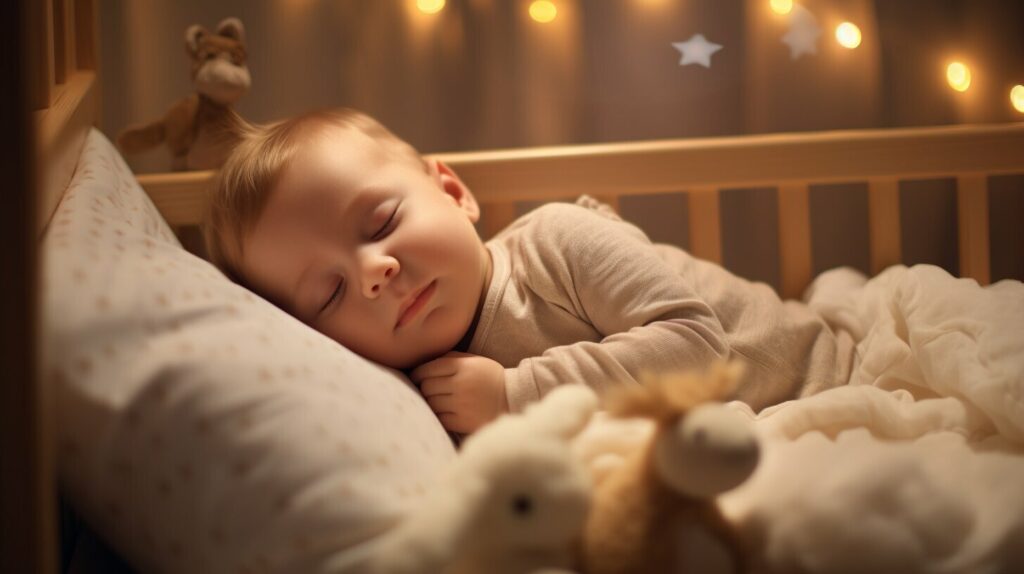
4. Don’t Let It Become a Crutch
Among the most balanced baby sleep routine tips is learning to use white noise without becoming dependent on it. Flexibility is key, especially if you’re traveling or sleeping in unfamiliar environments.
Occasionally introduce naps without white noise or combine it with other calming cues like rocking or gentle singing. This builds your baby’s ability to adapt to different sleep situations while still getting the benefits of white noise when needed.

5. Stay Safe with Sound
Protecting your baby’s hearing is non-negotiable. Smart baby sleep routine tips always include safety checks. Keep the white noise machine at a distance of at least 7 feet, and never exceed 60 decibels.
- Device Design: Use machines made for infant use with volume caps.
- Monitor Levels: Use a phone app to check real-time dB levels.
- Regular Quiet Time: Give your baby quiet moments throughout the day.
Need help selecting a safe machine? Browse our guide to sleep sound solutions.
6. Make the Sleep Space Extra Cozy
White noise is even more effective in a well-prepared sleep space. Baby sleep routine tips should also focus on the physical environment—temperature, light, bedding, and scent all play a role.
- Use blackout curtains to block out daylight for naps
- Choose breathable bedding on a firm, safe crib mattress
- Maintain a room temp of 68–72°F for optimal sleep comfort
- Add a calming aroma like lavender in a baby-safe diffuser
Learn more about using essential oils for relaxation.
7. Pay Attention to Your Baby’s Cues
The best baby sleep routine tips are always customized. Watch how your baby reacts to different sounds, routines, and environmental changes. If white noise causes more fussing than calm, it might be time to tweak your approach.
Track sleep behaviors in a notebook or app. Signs of success include less nighttime waking, faster sleep onset, and longer naps. Adjust volume, sound type, or bedtime rituals as your baby grows and changes.
Bonus Tip: Try White Noise for Yourself
Many parents forget this part of the equation—your own sleep matters too! A bonus baby sleep routine tip is to integrate white noise into your own bedtime habits. It helps drown out distractions and promotes deeper rest.
For a truly serene sleep space, consider reworking your bedroom layout. Explore feng shui principles for better sleep.
FAQ
- Are baby sleep routine tips with white noise safe for newborns?
- Yes, as long as the machine is placed 7 feet away and the volume is below 60 decibels.
- When should I stop using white noise in our baby sleep routine?
- Some parents stop by toddlerhood, while others continue if it improves sleep quality for everyone.
Curious about sustainable bedroom options? Explore our tips on bed frame materials and styles and learn how to choose the perfect material for your bed frame.
Interested in eco-conscious choices? Read about our eco-friendly bed frames or discover the revolutionary cardboard bed frame.
For even more green inspiration, check out this sustainable furniture guide from Architectural Digest, find out how to make your bedroom more eco-friendly, or explore eco-friendly bedroom ideas from The Spruce.



